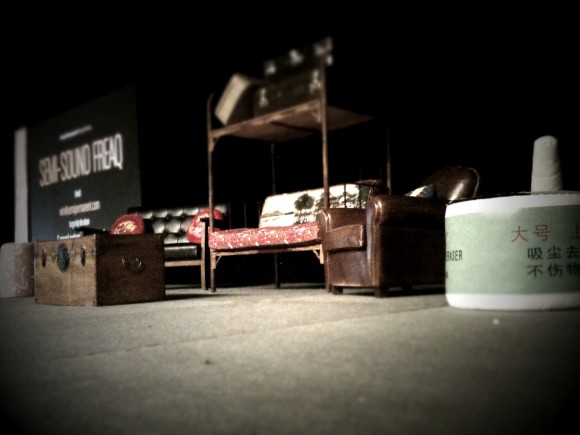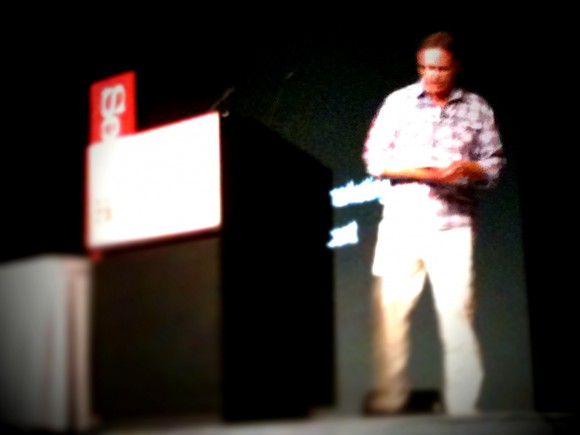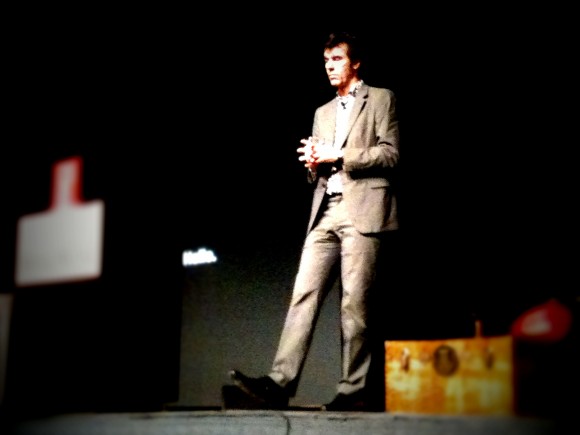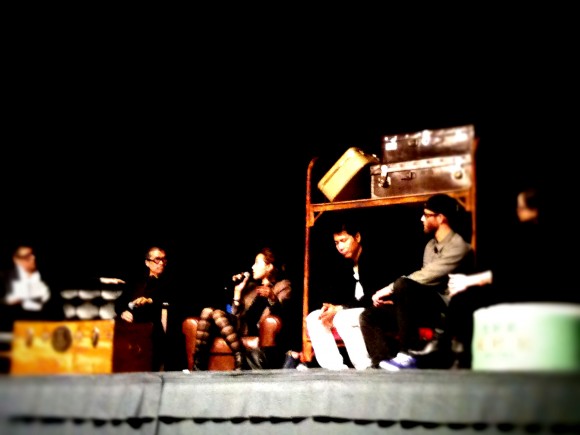Semi-Permanent Hong Kong
Semi-Permanent is a relatively new travelling conference aimed at the so-called “creative” demographic. For Semi-Permanent’s first outing in Hong Kong, there was a good selection of “creatives” on stage (all of whom had compelling work and great stories to share) and a healthy cross-section of Hong Kong’s “creative” community turned up to listen to them […]
Semi-Permanent is a relatively new travelling conference aimed at the so-called “creative” demographic. For Semi-Permanent’s first outing in Hong Kong, there was a good selection of “creatives” on stage (all of whom had compelling work and great stories to share) and a healthy cross-section of Hong Kong’s “creative” community turned up to listen to them over two days.
The first day started off with Danny Yount, an award-winning motion graphics designer. His work includes the opening sequences for Six Feet Under, title sequences for Kiss Kiss Bang Bang, RockNRolla, Iron Man and Tron Legacy as well as the amazing hologram computer effects in Iron Man2.
Yount, like many of the speakers, explored the way his life story has shaped his work. Overall the conference didn’t give the impression that any one type of background is more likely than another to lead people towards original and striking work. But, it did remind us, over and over again, that people who have a strong and compelling aesthetic voice are often aware of how their life has shaped the innovative aspects of their craft.
Next up was Simon Birch, a well known local artist, who made an immediate connection with the audience. Of all the speakers, Birch’s presentation was the most TED-like (I mean that as a compliment), in the way he interweaved the development of his art with his personal story; from tough origins in the UK, to risky adventures in Asia and finally, to overcoming cancer. It was a moving, vulnerable and ultimately powerful talk.
John Merrifield, from the advertising agency TBWA delivered more of a rant than a talk, about the poor quality of a lot of advertising work and the tendency, as he put it, to allow advertising to “greenwash” ethically suspect companies with a veneer of environmental concern. I resonated deeply with many of the challenges he presented, especially the role Nissan has played in moving forward the electric car conversation and the advertising campaign for the Zimbabwean newspaper.
I love seeing compelling art installed in business-like spaces. So, it was great to hear Conny Freyer, from the interdisciplinary design studio Trokia. The Cloud, is their amazing kinetic sculpture located in the British Airways business class lounge at Heathrow Terminal 5. Troika’s work relies on collaboration, manufacturing and solid engineering while maintaining a great sense of inventiveness. Of all the studios present at Semi-Permanent, Troika was the closest to the way I would like to work in the future.
Next was Nabil, a photographer turned video director who has worked with a great list of clients, most notably Kanye West. Despite the celebrity status of many of his subjects, Nabil was beautifully humble and honest. The day ended with the screening of his documentary, “Bouncing Cats,” about the positive role of breakdance culture amongst Ugandan youth. It was a moving, tough and hopeful film; a great reminder of the transformative power of music and dance.
Day two started with the wonderfully inventive and dedicated Dainippon Type Organisation. Their good humour and playfulness was infectious, even though they spoke with the aid of an interpreter. In particular, their work on bilingual typefaces really caught my attention. Dainippon Type Organisation’s slides were easily the most photographed of the whole conference.
Andy Fackrell, from advertising agency 180 Amsterdam, gave a well thought-out, biographical and tight presentation on his life and work in advertising. It humanised the role of an advertising creative but left me a little unmoved, perhaps because I’m already very familiar with the campaigns and have developed some opinions on them. It was a good touch to bring John Merrifield back to put some questions to Fackrell in the most spirited Q&A session of the two days.
There was a buzz in the auditorium before Stefan Sagmeister’s talk. He is the most internationally well-known of the speakers and, for a lot of people in the typography and graphic design worlds, something of a hero. He was engaging and honest and his comments drew a lot of attention on Twitter. However, his current personal project is going slower than anticipated and therefore he had little new material to show. As much as I enjoyed his talk, most of the material was already very familiar to anyone who has seen his excellent TED talks on design and happiness in 2004 and 2008.
Kayt Jones is a fashion photographer responsible for some of the most iconic images of the last decade. She was very apologetic about her presentation skills, quite shy and unfortunately spoke for a little too long. However, her story is compelling, she was really honest about the impact that getting married and having children had on her work and she revealed a lot about he she works with models to create the images she does.
Unfortunately, I missed the presentations by Anomaly (yet another advertising agency) and Industrial Light and Magic, because of a prior commitment to speak at RadioDada (more on that in the next blogpost). But, I did rush back to catch the Lane Crawford Live Panel talk about the state of art and design in Hong Kong.
I kind of wish I hadn’t bothered. It was a strong panel (Stanley Wong, Douglas Young, Rain Li, Simon Birch and Danielle Huthart), but they were reigned in by the moderator and the discussion never got past the old cliches about the government not doing enough, Hong Kongers still suffering from colonialism and the pervasiveness of market capitalism.
I think this kind of panel does Hong Kong a disservice. Sure we can criticise things like the West Kowloon Cultural Development (in fact, I came home and reread my 2009 comments on that project). But, we need a more substantial conversation, specific to each field, in order to really do something to improve things.
And, that points to what I found frustrating about Semi-Permanent. Sure, it was cool to hear this cross-section of brilliant speakers and talk to some of them. But, there was also a kind of superficiality that permeated the two days.
The venue certainly didn’t help. The Hong Kong Convention Centre is a cavernous building, well suited to trade shows. But, with vast walkways and few decent eateries near the room we had, it didn’t lend itself to meeting people and carrying on conversations. It’s a shame the space was not to better use showcasing more local work.
Moreover, the breadth of topics covered meant we never went very deep into any one area. I certainly did catch a few god ideas, from Nabil, Danny Yount and Kayt Jones that I will use in my own work.
But, perhaps there is a bigger problem? “Creative” is an increasingly problematic word, when it comes to describing a class of people, or a mindset (community and digital are similarly problematic words). In a way, it is easy to be superficial when we hide behind a label like “creative.”
All the people we saw on stage got to where they are because their work has been evaluated by a far tougher standard than just being “creative.” On some other more fundamental level it had to work, it had to connect, it had to be awesome.
Perhaps I’m being too harsh – my current mindset is somewhat anti-conference. After all, I only went to Semi-Permanent because the retailer Lane Crawford kindly gave me a VIP pass. It was very much a last minute decision. Still, I’m not sure I would go again, even with a free ticket.
For some other perspectives on Semi-Permanent Hong Kong, check out Semi-Permanent Hong Kong 2011 from Collecticle and hong kong creative love-in at semi-permanent from Secretstylist.








